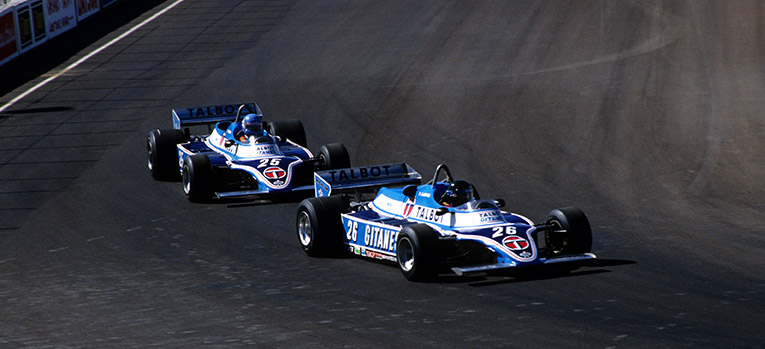
LAS VEGAS 1981 : Ligier dealt a bad hand!
There was a lot of pressure on Jacques Laffite's shoulders in the final Grand Prix of the 1981 season,on 17th October at Las Vegas, as he was back in the running for the title in his Ligier JS17. Despite a difficult start to the year, the 100% French team Talbot-Ligier-Matra-Michelin had fought its way back into contention. And its favourite driver was lying third in the drivers' ratings after his magnificent victory in the Canadian Grand Prix in Montreal. He was now only six and five points respectively behind the leaders, Carlos Reutemann in his Williams and Brabham-mounted Nelson Piquet. He had no choice, he had to win!
“Everybody upped the pressure on me as I could be world champion,” remembers Laffite. “I got out of the car and I said to Jean-Pierre (Jabouille, his engineer) there's that, that and that to be done and I went off to play golf. Jean-Pierre threatened me - in vain: ‘If you continue like this, I'm going to look after Tambay's (his team-mate) car.' I just walked away. I wanted to be left alone and clear my mind from the pressure of becoming world champion.” Easier said than done!
In addition, a new circuit awaited the 30 drivers in the last Grand Prix. None of them had the slightest reference point about the layout, which weaved its way around the Cesar's Palace hotel and casino's car park in Las Vegas between “concrete blocks, it was completely crazy,” according to the engineer in charge of the Ligier design office at the time, Michel Beaujon. But it was a folly that could create a great show, which explained the choice of the organizers. It was also a real test of the drivers' physical stamina. The circuit ran in an anti-clockwise direction, a rare configuration that was very demanding from a muscular point of view.
In qualifying, Tambay made the most of the situation and set the seventh-fastest time, but Laffite had to be content with twelfth place. The reason was a traction problem. But not to worry! On the first lap of the race, he fought his way up to seventh. A few laps later he was fifth and by half-distance he was lying second behind Alan Jones in his Williams. As for his team-mate, after being tagged by De Cesaris he slammed into a tyre wall on the third lap, which ripped off the front of the #25. It wasn't as bad as it looked for Patrick who miraculously emerged from the car with a few bruises.
“As Michelin had never raced on this circuit, they weren't sure of anything,” Jacques recalls. “Patrick was supposed to stop to check the temperature of the tyres and their wear. But very early on he had an accident that tore off the whole front of the car. I was worried; I wanted some news about how he was as I saw the car was cut in two and I still had to get on with my race.”
And Jacques did continue for a long time - too long - before being called into the pits to change his tyres that were caked with dirt and caused his lap times to fall off dramatically. “They should have stopped me several laps earlier,” regrets Jacques, “but Guy didn't want to despite the advice of Jabouille and Michelin! At the time when Guy said jump, we jumped!” Alain Prost in his turbo-charged Renault had the same tyres and stopped on lap 33. Laffite came in on lap 52! It was all over. The dream had flown. Jacques would not be world champion that year. He finished sixth in the race and fourth in the drivers' championship while Ligier scored the same result in the constructors' title chase. Alan Jones won the race and Piquet the championship, but once again Les Bleus almost pulled off a marvellous exploit and thrilled France in the process.
Photo credit: DPPI Images